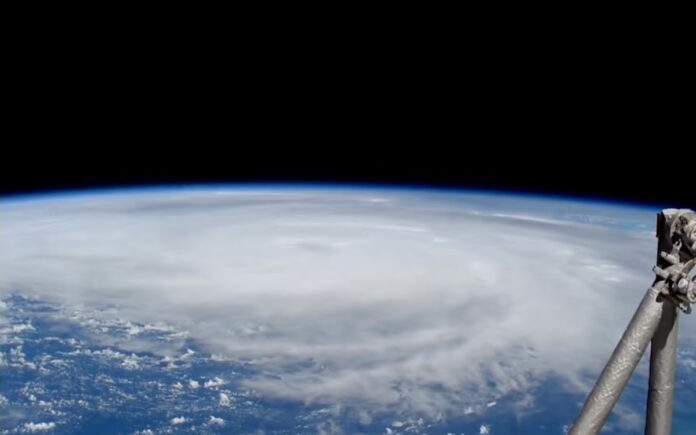Tallahassee: Hurricane Helene roared ashore Florida’s Big Bend region, marking its place as one of the most powerful storms to impact the United States. With officials fearing a devastating aftermath, the hurricane is anticipated to leave behind a trail of destruction and potentially fatal consequences as it moves inland.
As of now, at least one fatality in Florida has been attributed to Helene, according to authorities. The Category 4 storm made landfall around 11:10 p.m. Eastern Time (03:10 GMT), unleashing winds gusting at 140 mph (225 kph). Even prior to its arrival, Helene had already caused power outages affecting over 1 million customers and resulted in severe flooding across several areas.
Authorities are bracing for more fatalities to be reported on Friday, as the storm threatens to trigger surges capable of pushing 20 feet (6 meters) of seawater onto land and dumping even more rain. Officials noted that it could take hours before rescue personnel are able to reach those in need.
Helene is tied as the 14th most powerful hurricane to strike anywhere in the U.S. since records began and ranks as the seventh most powerful hurricane to hit Florida, based on data from the National Hurricane Center. Florida Governor Ron DeSantis reported that the one confirmed fatality linked to Helene involved a driver whose car was struck by debris. “When we wake up tomorrow morning, the chances are there will likely have been more fatalities,” DeSantis added.
Residents in the storm’s path were urged to hunker down amid life-threatening conditions. The storm surge was expected to reach between 15 to 20 feet (5 to 6 meters) in the Big Bend area of the Panhandle where Helene made landfall. “A really unsurvivable scenario is going to play out” in the coastal areas, National Hurricane Center director Michael Brennan warned during a video briefing, noting that water could destroy buildings and carry cars inland.
Strong rain bands have already lashed parts of coastal Florida, while rainfall is also affecting Georgia, South Carolina, central and western North Carolina, and parts of Tennessee. Atlanta, hundreds of miles north of Florida’s Big Bend, was placed under a tropical storm warning.
In Pinellas County, located on a peninsula surrounded by Tampa Bay and the Gulf of Mexico, roads were beginning to flood before noon. Officials cautioned that the storm’s impact could rival last year’s Hurricane Idalia, which inundated 1,500 homes in the low-lying coastal county. Videos posted on the county’s social media showed some beachside roads submerged and water overtaking boat docks.
Airports in Tampa, Tallahassee, and St. Petersburg suspended operations on Thursday in response to the storm. Forecasters predict that Helene will remain a hurricane as it moves through the Macon, Georgia area on Friday, potentially delivering 12 inches (30.5 cm) of rain or more, which could devastate the state’s cotton and pecan crops during the critical harvesting season. “The current forecast for Hurricane Helene suggests this storm will impact every part of our state,” stated Georgia Governor Brian Kemp.
After making landfall in Florida, Helene is expected to move more slowly over the Tennessee Valley on Friday and Saturday, according to the NHC. Numerous evacuations have been ordered along Florida’s Gulf Coast, including in Sarasota and Charlotte counties.
In Taylor County, the Sheriff’s Department advised residents who chose not to evacuate to write their names and dates of birth on their arms in permanent ink for identification purposes. In coastal Dunedin, Florida, Ken Wood, a state ferry boat operator, expressed his intention to ride out the storm with his 16-year-old cat, Andy. “We’re under orders, but I’m going to stay right here at the house,” Wood told Reuters via telephone.
Tallahassee officials voiced concerns that Helene could inflict unprecedented damage. Reinsurance broker Gallagher Re estimated preliminary private insurance losses could reach between $3 billion and $6 billion, with federal insurance program losses approaching $1 billion.
Energy facilities along the U.S. Gulf Coast have reduced operations and evacuated some production sites. Deanne Criswell, director of the Federal Emergency Management Agency, announced at a White House briefing that she would travel to Florida on Friday to assess the damage firsthand. Helene is expected to release up to 15 inches (38.1 cm) of rain in isolated areas after making landfall in Florida, leading to significant flash and urban flooding, as indicated by the hurricane center.



